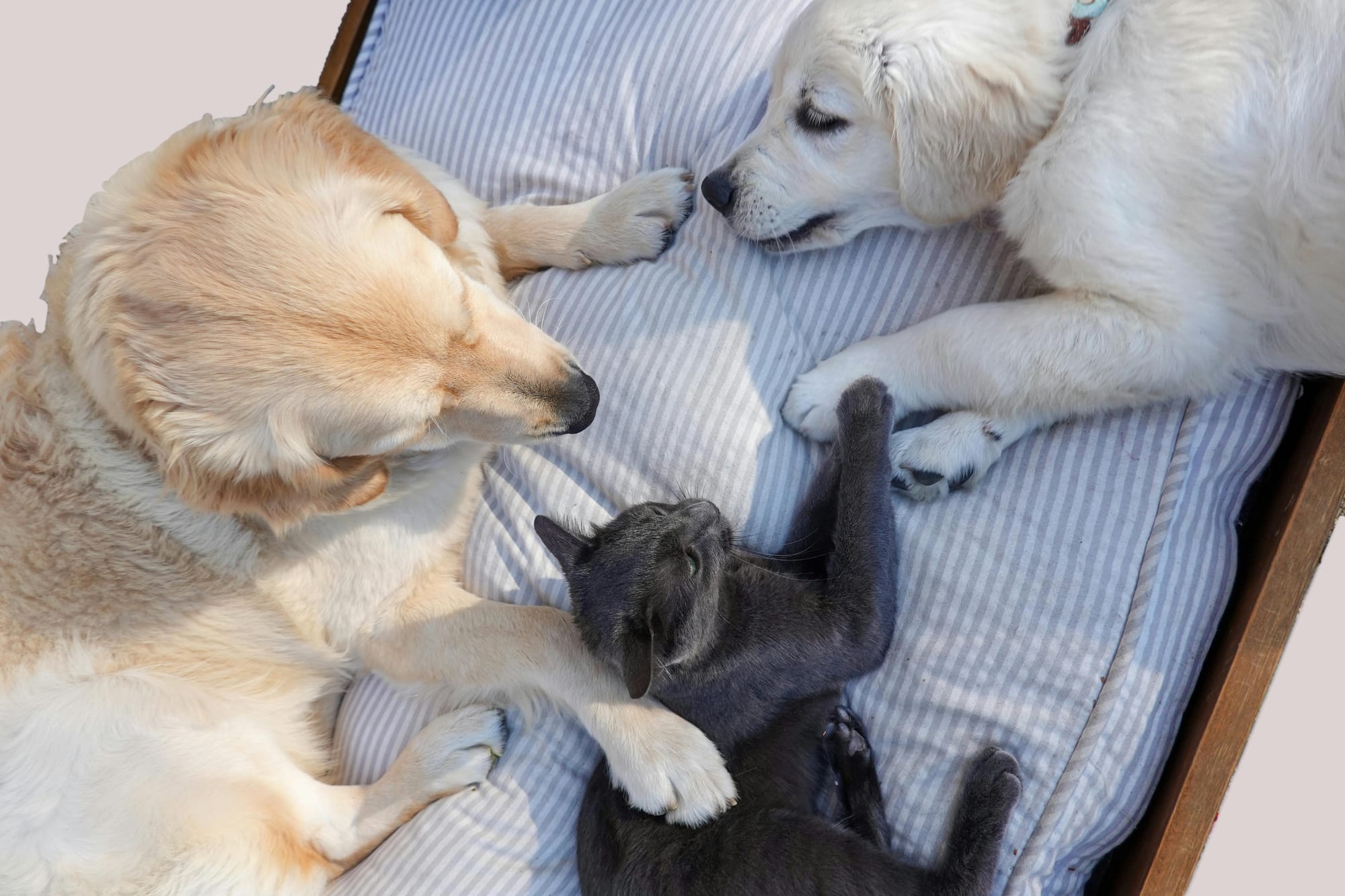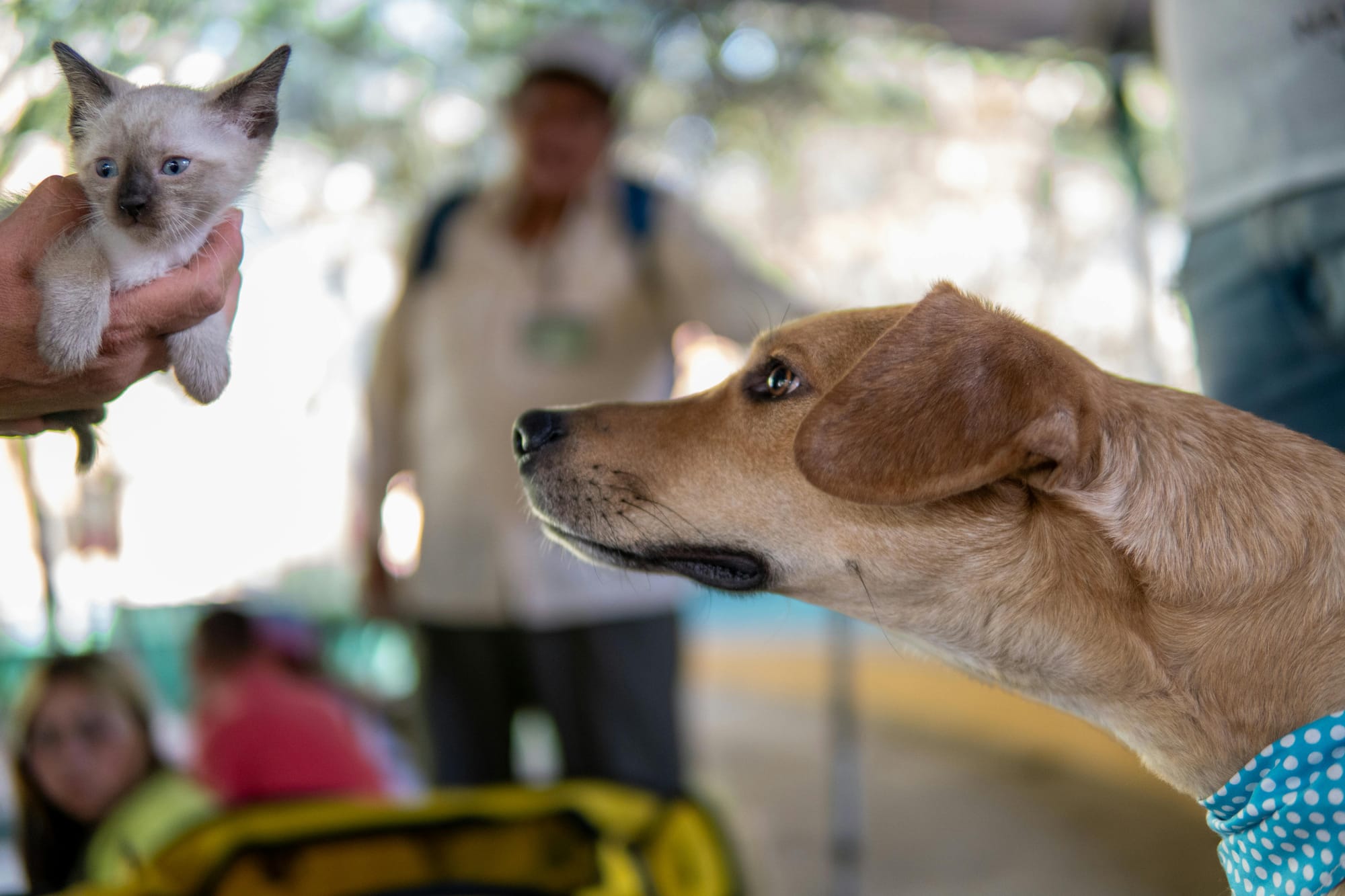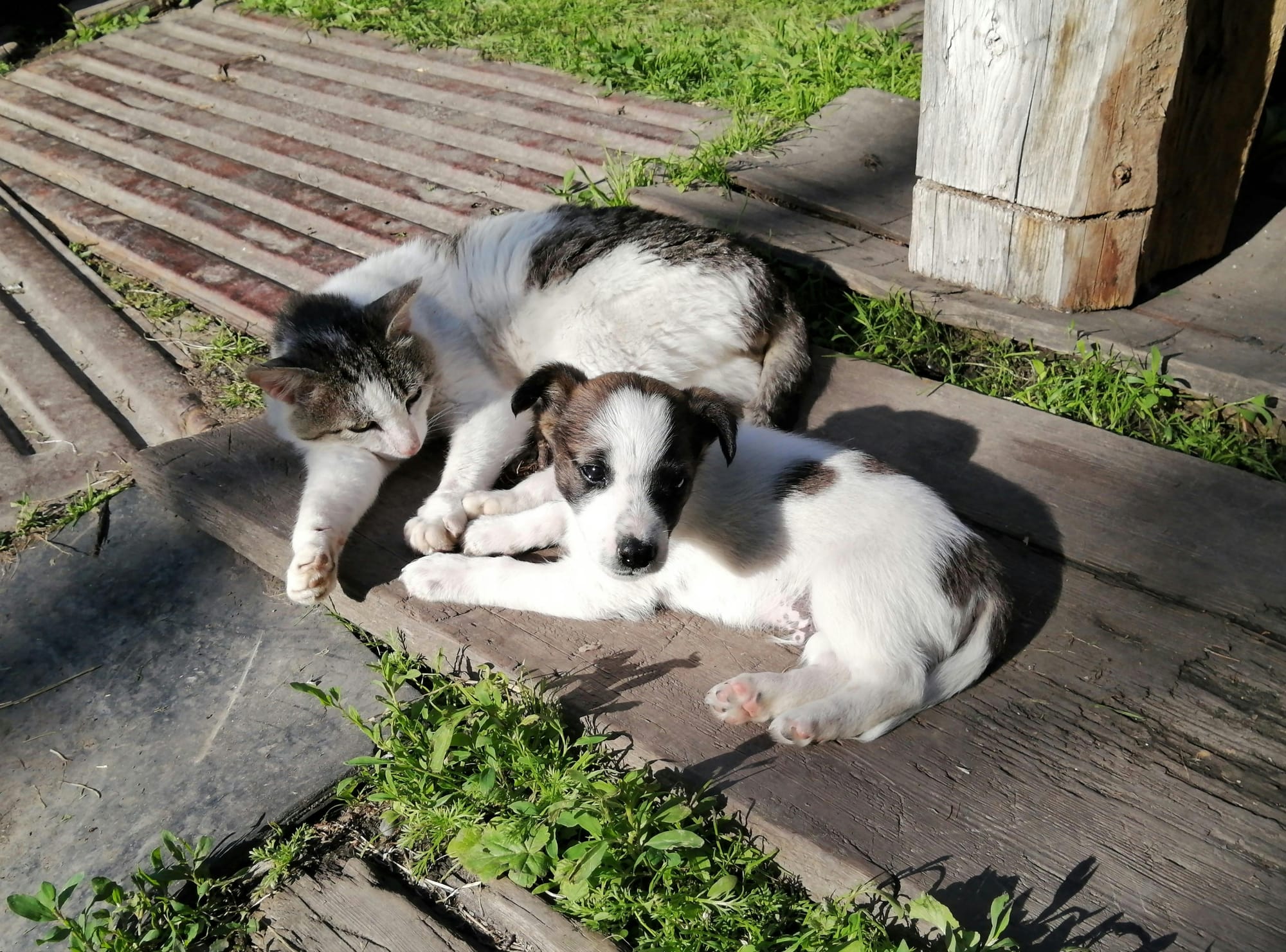How to Introduce a Dog and Cat: Help Your Cat and Dog Get Along As Friends

Introducing a dog and cat can feel intimidating, but with patience, planning, and the right approach, your cat and dog can learn to coexist—and even form a bond. Whether you're bringing home a new puppy or introducing an adult cat to your resident dog, it’s essential to prioritize both pets’ safety and comfort throughout the process.
The Importance of a Calm Introduction Between a Dog and Cat
A calm introduction sets the tone for future interactions. Many dogs are naturally curious around cats, and some may react strongly to a new animal in their space. Cats, on the other hand, tend to be territorial and sensitive to sudden changes. For your dog and cat to get along, you need to create a plan that encourages positive associations while managing boundaries.
Begin With a Closed-Door Introduction
Before any face-to-face interaction, your dog and cat should be able to smell and hear each other through a closed door.
- Keep the dog on a leash when near the door.
- Let your cat sniff objects with your dog’s scent and vice versa.
- Use positive reinforcement when each pet remains calm.
This stage helps both the dog and cat get used to each other’s presence without creating stress.
First Impressions Matter: The Right Way to Introduce a Dog
When it’s time to introduce a dog in person, take it slow. The goal is to keep the dog calm and help the cat feel secure.
Step-by-Step Introduction
- Keep them apart for at least the first few days.
- Use a baby gate to allow visual access while keeping both animals safe.
- Use tasty treats for calm behavior and reward both pets.
- Let the cat control the interaction; never force them to meet.
- Practice basic obedience cues like “sit” and “stay” with your dog to reinforce focus and calm behavior.
Leash Control for Dogs Around Cats
During initial meetings, keep your dog on a leash. If your dog seems fixated on the cat or overly excited, redirect their attention with a toy or treat. Ask the dog to sit and reward for ignoring the cat.

Puppies and Kittens: Growing Up Together
Introducing a puppy to a kitten can be a little easier, as both animals are still developing social skills. Still, supervision is key.
- Kittens and dogs should always be monitored when together.
- Make sure your kitten has a place to retreat, like tall cat trees or separate rooms.
- Even if your puppy is playful, watch for signs of rough behavior, like chasing the cat or excessive barking.
Letting your cat and dog develop a gradual relationship will reduce stress and encourage positive behavior.
Managing Behavior During the Introduction Phase
Understanding Dog Behavior Around Cats
Many dogs have a prey drive that can make chasing the cat seem like play—even when it’s not. It’s crucial to monitor your dog’s behavior, especially if you notice stalking or fixation.
- Redirect unwanted attention with toys or verbal commands.
- Use training sessions to reinforce desired behavior.
- If the dog may be too rough, separate them and try again later.
What to Do if the Cat is Nervous
- Make sure your cat has escape routes and vertical space.
- Provide food bowls, litter boxes, and beds away from the dog’s area.
- Allow the cat to lure the dog closer when comfortable.
Cats and dogs use body language differently, so miscommunication is common. Give them time to understand each other’s signals.

Training Tips to Help Your Cat and Dog Get Along
For a successful relationship between your cat and dog, invest time in training sessions and controlled exposure. This will allow the dog and cat to interact calmly and safely.
Use Positive Reinforcement
- Praise and reward both pets when they behave appropriately.
- Use tasty treats for calm behavior to reinforce a relaxed atmosphere.
- If the dog gets too excited, ask the dog to look at you instead of the cat to refocus their attention.
Teaching Your Dog to Be Calm Around the Cat
- Practice commands to encourage your dog to sit and reward them for ignoring the cat.
- Encourage your dog to remain calmly seated even if the cat walks near.
- If needed, use a leash until you're confident in the dog’s self-control.
It’s vital to introduce a dog in a way that supports long-term harmony. If you rush the process, you risk triggering fear or defensive aggression.
When to Allow Face-to-Face Contact
Once your dog consistently exhibits calm behavior, you can allow brief face-to-face sessions.
Steps to Keep the Peace
- Only allow meetings when both animals are relaxed.
- Use a baby gate or keep the dog on a leash during initial contact.
- Keep sessions short and gradually increase time together.
- Monitor for signs of stress: tail flicking, growling, or hiding.
Avoid letting the dog that the cat isn’t ready for get too close too soon. Let the cat move at their own pace and never restrain either pet.

Common Challenges During Introduction
What If the Dog is Too Energetic?
Some dogs may become overly excited around the cat. If your dog shows signs of fixation or agitation:
- Interrupt and redirect their attention to a toy.
- If they remain too intense, leave the room and try again later.
Let your dog and cat learn to get used to each other’s presence without constant confrontation.
The Cat is Hiding or Avoiding the Dog
Your adult cat may need more time to feel safe around your dog. In this case:
- Keep areas of your home where the cat walks dog-free.
- Allow the cat to lure the dog at their own pace.
- Use scent-sharing methods to encourage familiarity.
Managing Feeding and Space
Food can become a stressor for both animals. To reduce tension:
- Feed in separate rooms.
- Avoid placing food bowls near shared areas.
- Never allow either animal to steal the other’s food.
Be consistent. Over time, your cat and dog will start getting along well in a shared space.
How Long Does It Take for a Cat and Dog to Get Used to Each Other?
There’s no one-size-fits-all answer. For some pets to get used to one another, it may take days; for others, several weeks or more.
- Separate for at least the first 3-4 days.
- Use scent exchanges and visual contact before physical introductions.
- Recognize that the goal is to allow both animals to feel safe and in control.
Even if the dog cannot fully contain excitement, repeat exposure and positive reinforcement often help both animals live together peacefully.
Bringing a New Pet Into the Home: Setting the Stage for Harmony
Introducing a new pet—especially when one is a dog and the other a cat—requires preparation, patience, and careful observation.
Before any physical introductions take place, it's essential to allow both animals to hear and smell each other without face-to-face contact. This step allows your current pet and the new arrival to slowly associate the presence of the other animal in a low-stress way.
Tips to Prepare Your Home for a New Pet
- Place the new pet in a separate room with its own food, bedding, and litter box or crate.
- Feed both pets on opposite sides of a closed door so they can associate good things (like mealtime) with each other's scent.
- Spend time right next to the door with both pets, praising calm behavior.
- Use scent-swapping techniques like exchanging blankets or toys.
This gradual exposure reduces stress and helps introducing your pets feel less like a confrontation and more like a curiosity. If you give your cat time and space, they’re more likely to approach interactions with confidence rather than fear.

How to Help a Dog and a Cat Get Comfortable Together
Getting a dog and a cat to coexist doesn’t happen overnight. While some pairs naturally click, others require consistent dog training and supervision to manage the dynamic.
Building Trust Through Gradual Steps
- Begin by letting the dog and a cat see one another only during calm, controlled interactions.
- Position your dog away from the cat if they show too much excitement or fixation.
- Use positive dog training methods to reinforce ignoring or sitting calmly near the cat.
- If your dog shows too much interest in the cat, redirect their attention with treats, toys, or verbal cues.
Let your cat explore around the dog at their own pace. Keep sessions brief and positive, gradually increasing duration. Always allow the pets to get used to one another slowly rather than forcing close interaction too soon.
Final Thoughts: Helping Your Cat and Dog Get Along
By planning a thoughtful introduction, managing boundaries, and reinforcing calm behavior, your pets will have the best chance of forming a peaceful relationship. Many people think it’s like cats and dogs will never get along—but with consistency and training, they often surprise us.
Tips Recap:
- Start with scent exchanges and closed door introductions.
- Monitor body language and correct any signs of aggression or stress.
- Make use of leashes, baby gates, and positive reinforcement.
- Be patient—especially with an adult cat or puppy unfamiliar with other species.
For more in-depth guidance, visit trusted resources like ASPCA’s Pet Behavior Library or American Humane’s training tips.




